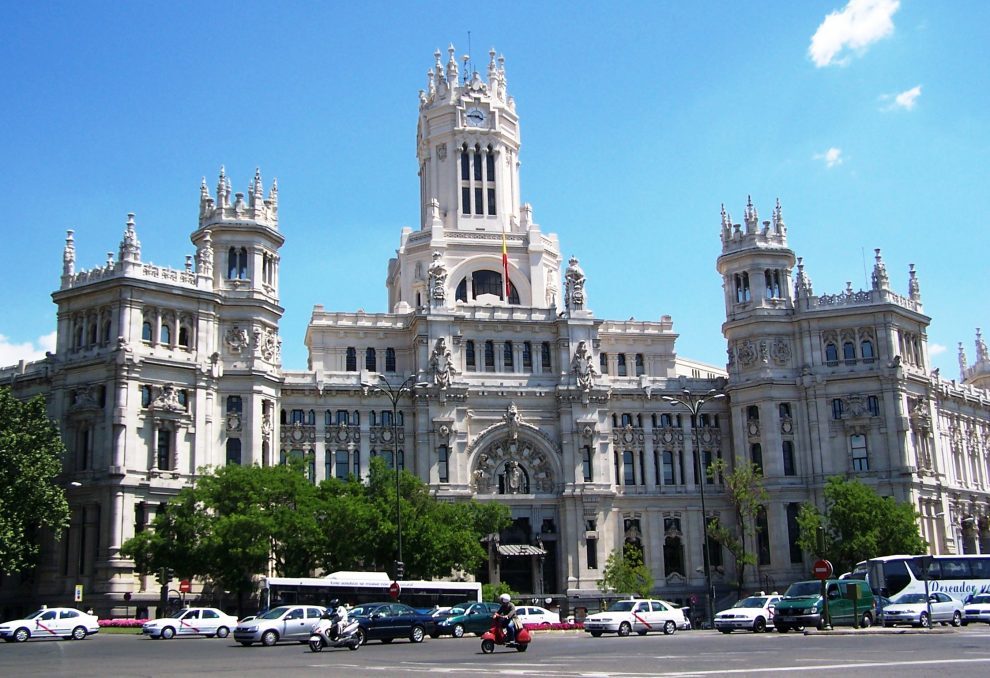What’s the problem you’re trying to solve with Reinventing Cities Madrid?
“By participating in the contest, the city of Madrid is trying to provide urgent solutions to climate change. Madrid, like other major cities, needs to change the way buildings are built and how urban areas are planned.
Reinventing Cities could also be a way to reduce socio-economic inequality between urban areas. This is an important issue in Madrid, a city with thriving central areas living next to vulnerable and peripheral boroughs. The contest offers the possibility to redevelop abandoned spaces and declined areas, giving them a new opportunity from an innovative perspective where sustainability plays an important role.”
How can this problem be turned into an opportunity?
“The contest offers an opportunity to innovate in different areas: Energy efficiency, local production of energy, water management, and green infrastructure. It also offers new forms of collaboration: Projects between public and private actors, between companies and households and neighbourhood associations, between urban developers or architects and other professionals like artists, designers, ecologists, landscapers, and sociologists.
It’s about time to think in a different way and build cities according to higher environmental and social standards.”
Who can participate in Reinventing Cities Madrid and how?
“Reinventing Cities Madrid requires an architect or engineer to assume the technical responsibility of a given project, and an environmentalist. Aside from that, participation is open to any professional or company who can provide value and experience in the design, implementation, or management of a new project.
Learn how you can participate via Reinventing Cities’ Meet-Up section.”
How do the projects tie into greater climate goals, like the Paris Agreement?
“These projects aspire to be demonstrative to other cities in the world. They prove there is the technology available to develop a zero-carbon building, for example. The participation of cities all over the world is also important to show it’s possible to find a solution for any site and set of climate conditions.
Because of the harsh climate conditions in Madrid, the proposals should develop strategies of adaptation to very hot and dry seasons, with the use of vegetation with low irrigation, solar protection, ventilation, and evapotranspiration requirements. The projects will be case studies for other Mediterranean cities especially.
And, the contest is expected to have a high media impact due to dissemination at an international level with the support of C40, Climate-KIC, Algoe, and also at the local level via municipalities and other organisations like the College of Architects or Urban Land Institute.”
What are you excited for with regards to Reinventing Cities Madrid, and what do you hope to see?
“We have already seen the winning proposals for Reinventing Cities Paris and the Grand Paris Metropole. It will be really amazing to achieve these kinds of projects: Buildings with really noteworthy architecture, and that attract diverse uses, buildings that became city landmarks, and have the capacity to transform and regenerate declined areas.”
What do you think the challenges might be?
“I supposed the main challenge will be to secure banks and investors to finance the project. This is a new type of project that doesn’t only respond to financial profitability, but also to social and environmental benefits. The project teams should gather companies with a high corporate social responsibility.
Also, the legal framework and the urban planning rules in Spain are, in general, more restrictive than in other countries.”
What role does innovation play when it comes to climate change?
“Innovation is thinking about the future. To tackle climate change, it’s necessary to adopt new approaches, so we need an increasingly environmentally concerned society involved in changing the ways we consume, we move, we work, etc. It’s necessary to connect with society, and when that happens, even private companies and governments will have no choice but to act in the accepted way.”
In 10 years, what do you hope to see in the city of Madrid in terms of infrastructure, energy use, public space, etc.?
“In terms of infrastructure and energy use, I hope to see the operation of local energy networks to supply new urban areas or renovated areas, and besides, in a urban scale, the construction of a great singular project of renewal energy generation, by solar energy or geothermal sources. According to the scarcity of rainwater in our city, it will be also very necessary to introduce water recycling systems inside buildings. I also hope to see ambitious reforestation in the southeast of the city, creating a ring welt that reduces urban heat island of the city. Within the city, I expect to see streets with more bicycles, more shared vehicles, fewer parking spaces, and also areas with mixed uses, reducing commuting, and creating a more livable city.”
What is your climate action message to the world?
“It’s necessary to act against climate change, not only because of the health of the planet, but for our own benefit. Responsible behaviour creates opportunities for new jobs, new types of business in a new economy, increases our living standards with low pollution, noise, and high-quality neigbourhoods, and is going to be the most trendy and fashionable way of living in 2030.”




